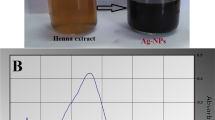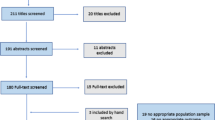Abstract
Acanthamoeba is one of the most common free-living amoebae. It is widespread in the environment and can infect humans causing keratitis. Delayed diagnosis or misdiagnosis leads to extensive corneal inflammation and profound visual loss. Therefore, accurate and rapid diagnosis of Acanthamoeba keratitis is essential for successful treatment and good prognosis. This study was designed to use different staining techniques to facilitate the identification of Acanthamoeba cysts. Acanthamoeba cysts were isolated by cultivation of either corneal scraping specimens or tap water samples onto non-nutrient agar plates seeded with Escherichia coli. Subcultures were done from positive cultures until unique cysts were isolated. Acanthamoeba cysts were stained temporarily using iodine, eosin, methylene blue, and calcofluor white (CFW) stains and as permanent slides after processing for mounting using modified trichrome, Gimenez and Giemsa staining. These stains were compared on the basis of staining quality including clarity of morphological details, differentiation between cytoplasm and nuclei, color and contrast, and also other characteristics of the staining techniques, including ease of handling, time taken for the procedure, and cost effectiveness. The cysts of Acanthamoeba were recognized in the form of double‐walled cysts: the outer wall (ectocyst) that was being differentiated from the variably stained surrounding background and the inner wall (endocyst) that was sometimes stellated, polygonal, round, or oval and visualized as separate from the spherical, sometimes irregular, outline of the ectocyst. Regarding the temporary stains, it was found that they were efficient for visualizing the morphological details of Acanthamoeba cysts. In CFW staining, Acanthamoeba cysts appeared as bluish-white or turquoise oval halos although the internal detail was not evident. On the other hand, the results of permanent-stained slides showed the most consistent stain for identification of Acanthamoeba cysts was modified trichrome followed by Gimenez stain and lastly Giemsa stain that gave poor visibility of Acanthamoeba cysts due to the intense staining background and monochrome staining of parasite. In the present study, multi-attribute ranking of the used staining techniques showed the highest rank for iodine stain (92 %) followed by eosin stain (84 %), Gimenez stain (76 %), methylene blue (72 %), CFW (64 %), modified trichrome (56 %), and the least was Giemsa stain (44 %). In conclusion, the staining techniques enhance the overall visibility of Acanthamoeba cysts.








Similar content being viewed by others
References
Bharathi MJ, Ramakrishnan R, Meenakshi R, Mittal S, Shivakumar C, Srinivasan M (2006) Microbiological diagnosis of infective keratitis: comparative evaluation of direct microscopy and culture results. Br J Ophthalmol 90(10):1271–1276. doi:10.1136/bjo.2006.096230#_blank
Brennan PJ, Hunter SW, McNeil M, Chatterjee D, Daffe M (1990) Reappraisal of the chemistry of mycobacterial cell walls, with a view to understanding the roles of individual entities in disease processes. In: Ayoub EM, Cassell GH, Branche WC Jr, Henry TJ (eds) Microbial determinants of virulence and host response. American Society for Microbiology, Washington, D.C, pp 55–75
Didier ES, Orenstein JM, Aldras A, Bertucci D, Rogers LB, Janney FA (1995) Comparison of three staining methods for detecting Microsporidia in fluids. J Clin Microbiol 33(12):3138–3145
El-Sayed NM, Ismail KA, Ahmed SAG, Hetta MH (2012) In vitro amoebicidal activity of ethanol extracts of Arachis hypogaea L., Curcuma longa L. and Pancratium maritimum L. on Acanthamoeba castellanii cysts. Parasitol Res 110(5):1985–1992
Ertabaklar H, Türk M, Dayanir V, Ertuğ S, Walochnik J (2007) Acanthamoeba keratitis due to Acanthamoeba genotype T4 in a non-contact-lens wearer in Turkey. Parasitol Res 100(2):241–246
Garcia LS (2007) Diagnostic medical parasitology I\SM press, Washington DC; part II, pp. 771–812
Gimenez DF (1964) Staining Rickettsiae in yolksack cultures. Stain Technol 39:135–140
Grossniklaus HE, Waring GO IV, Akor C, Castellano-Sanchez AA, Bennett K (2003) Evaluation of hematoxylin and eosin and special stains for the detection of Acanthamoeba keratitis in penetrating keratoplasties. Am J Ophthalmol 136(3):520–526
Harrington H (2003) Calcofluor white: a review of its uses and applications in clinical mycology and parasitology. Lab Med 34(5):361–376
Ibrahim YW, Boase DL, Cree IA (2009) How could contact lens wearers be at risk of Acanthamoeba infection? A review. J Optom 2(2):60–66
Init I, Lau YL, Arin-Fadzlun A, Foead AI, Neilson RS, Nissapatorn V (2010) Detection of free living amoebae, Acanthamoeba and Naegleria, in swimming pools, Malaysia. Trop Biomed 27(3):566–577
Ithoi I, Ahmad AF, Mak JW, Nissapatorn V, Lau YL, Mahmud R (2011) Morphological characteristics of developmental stages of Acanthamoeba and Naegleria species before and after staining by various techniques. Southeast Asian J Trop Med Public Health 42(6):1327–1338
MacPherson DW, McQueen R (1993) Cryptosporidiosis: multi-attribute evaluation of six diagnostic methods. J Clin Microbiol 3 1(2):198–202
Marciano-Cabral F, Cabral G (2003) Acanthamoeba spp as agents of disease in humans. Clin Microbiol Rev 16(2):273–307
Pietrzak-Johnston SM, Bishop H, Wahlquist S, Moura H, Da Silva ND, Da Silva SP, Nguyen-Dinh P (2000) Evaluation of commercially available preservatives for laboratory detection of helminths and protozoa in human faecal specimens. J Clin Microbiol 38(5):1959–1964
Pirehma M, Suresh K, Sivanandam S, Anuar KA, Ramakrishnan K, Kumar GS (1999) Field’s stain—a rapid staining method for Acanthamoeba spp. Parasitol Res 85:791–793
Ryan NJ, Sutherland G, Coughlan K, Globan M, Doultree J, Marshall J, Baird RW, Pedersen J, Dwyer B (1993) A new trichrome-blue stain for detection of microsporidial species in urine, stool, and nasopharyngeal specimens. J Clin Microbiol 31:3264–3269
Scheid P, Schwarzenberger R (2012) Acanthamoeba spp. as vehicle and reservoir of adenoviruses. Parasitol Res 111(1):479–485
Scheid P, Zöller L, Pressmar S, Richard G, Michel R (2008) An extraordinary endocytobiont in Acanthamoeba sp. isolated from a patient with keratitis. Parasitol Res 102(5):945–950
Schuster FL (2002) Cultivation of pathogenic and opportunistic free-living amebas. Clin Microbiol Rev 15(3):342–354
Sharma S, Grag P, Roa GN (2000) Patient characteristics, diagnosis and treatment of non-contact lens related Acanthamoeba keratitis. Br J Ophthalmol 84(10):1103–1108. doi:10.1136/bjo.2006.096230#_blank
Sharma S, Athmanathan S, Ata-Ur-Rasheed M, Garg P, Rao GN (2001) Evaluation of immunoperoxidase staining technique in the diagnosis of Acanthamoeba keratitis. Indian J Ophthalmol 49(3):181–186
Sharma S, Pasricha G, Das D, Aggarwal RK (2004) Acanthamoeba keratitis in non-contact lens wearers in India: DNA typing-based validation and a simple detection assay. Arch Ophthalmol 122(10):1430–1434
Shen J, Jiang QW, Li QX, Chen HY, Li ZH (2005) Gimenez staining: a rapid method for initial identification of legionella pneumophila in Amoeba trophozoite. Zhongguo Ji Sheng Chong Xue Yu Ji Sheng Chong Bing Za Zhi 23(4):240–242
Shoff ME, Rogerson A, Kessler K, Schatz S, Seal DV (2008) Prevalence of Acanthamoeba and other naked amoebae in South Florida domestic water. J Water Health 6(1):99–104
Thomas PA, Jesudasan CAN, Kaliamurthy J (2011) Rapid detection of Acanthamoeba cysts in corneal scrapings by chlorazol black E staining. Can J Ophthalmol 46(5):443–444
Visvesvara GS, Moura H, Schuster FL (2007) Pathogenic and opportunistic free-living Amoeba: Acanthamoeba spp., Balamuthia mandrillaris, Naegleria fowleri, and Sappinia diploidea. FEMS Immunol Med Microbiol 50(1):1–26
Walochnik J, Obwaller A, Aspock H (2000) Correlations between morphological, molecular biological and physiological characteristics in clinical and nonclinical isolates of Acanthamoeba spp. Appl Environ Microbiol 66(10):4408–4413
Waring GO IV, Akor C, Castellano-Sanchez A, Grossniklaus H E (2003) Hematoxylin and eosin is superior to calcofluor white and acridine orange in detecting Acanthamoeba Keratitis. Investig Ophthalmol Vis Sci 44
Whitcher JP, Srinivasan M, Upadhyay MP (2003) Microbial keratitis. In: Johnson GJ, Minassian DC, Weale RA, West SK (eds) The epidemiology of eye diseases, 2nd edn. Arnold, London, pp 190–195
Yera H, Zamfir O, Bourcier T, Ancelle T, Batellier L, Dupouy- Camet J, Chaumeil C (2007) Comparison of PCR, microscopic examination and culture for the early diagnosis and characterization of Acanthamoeba isolates from ocular infections. Eur J Clin Microbiol Infect Dis 26:221–224
Author information
Authors and Affiliations
Corresponding author
Rights and permissions
About this article
Cite this article
El-Sayed, N.M., Hikal, W.M. Several staining techniques to enhance the visibility of Acanthamoeba cysts. Parasitol Res 114, 823–830 (2015). https://doi.org/10.1007/s00436-014-4190-4
Received:
Accepted:
Published:
Issue Date:
DOI: https://doi.org/10.1007/s00436-014-4190-4




